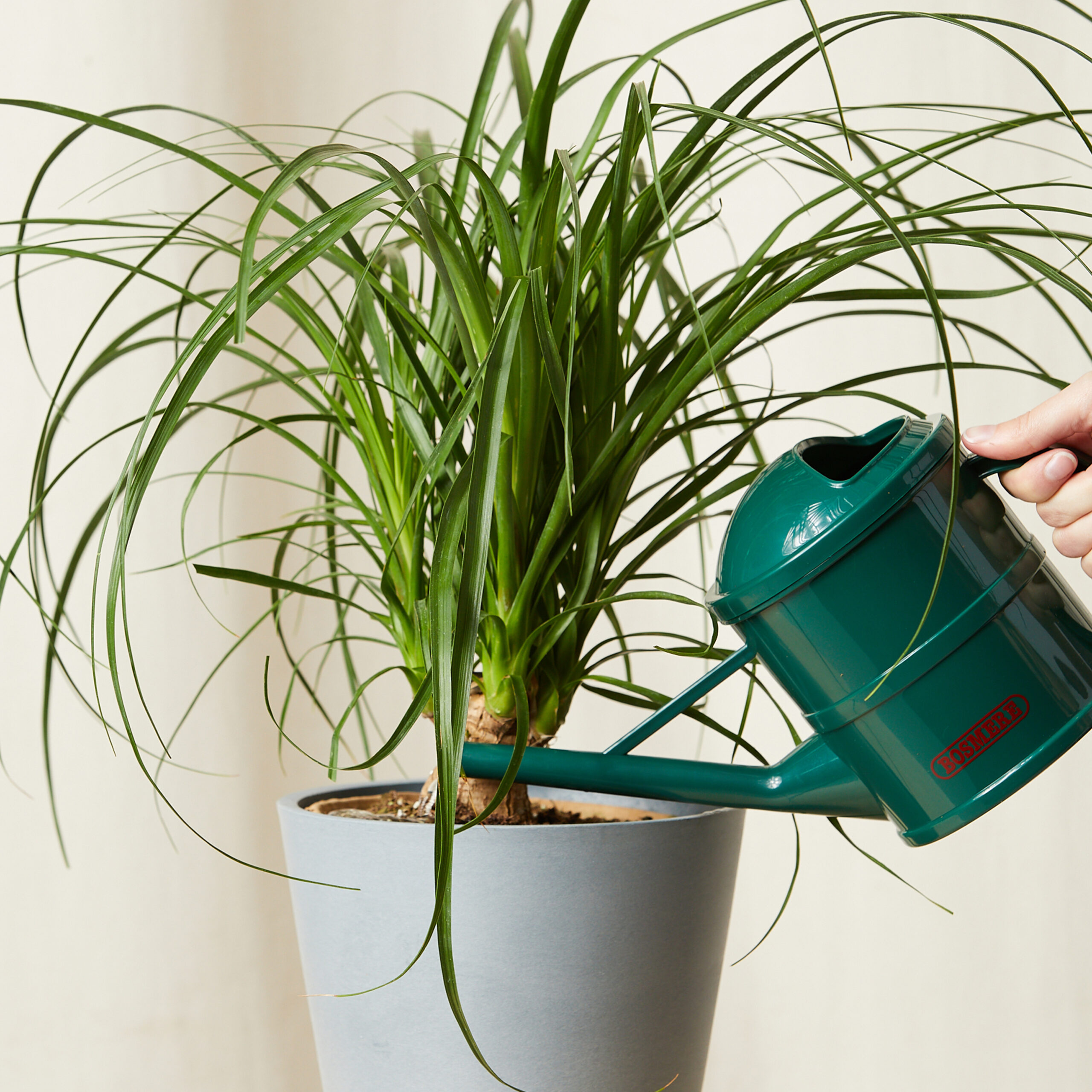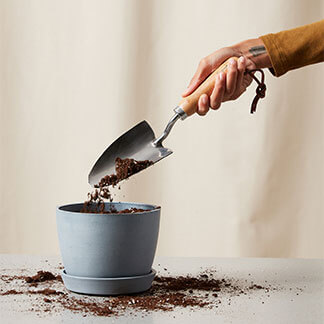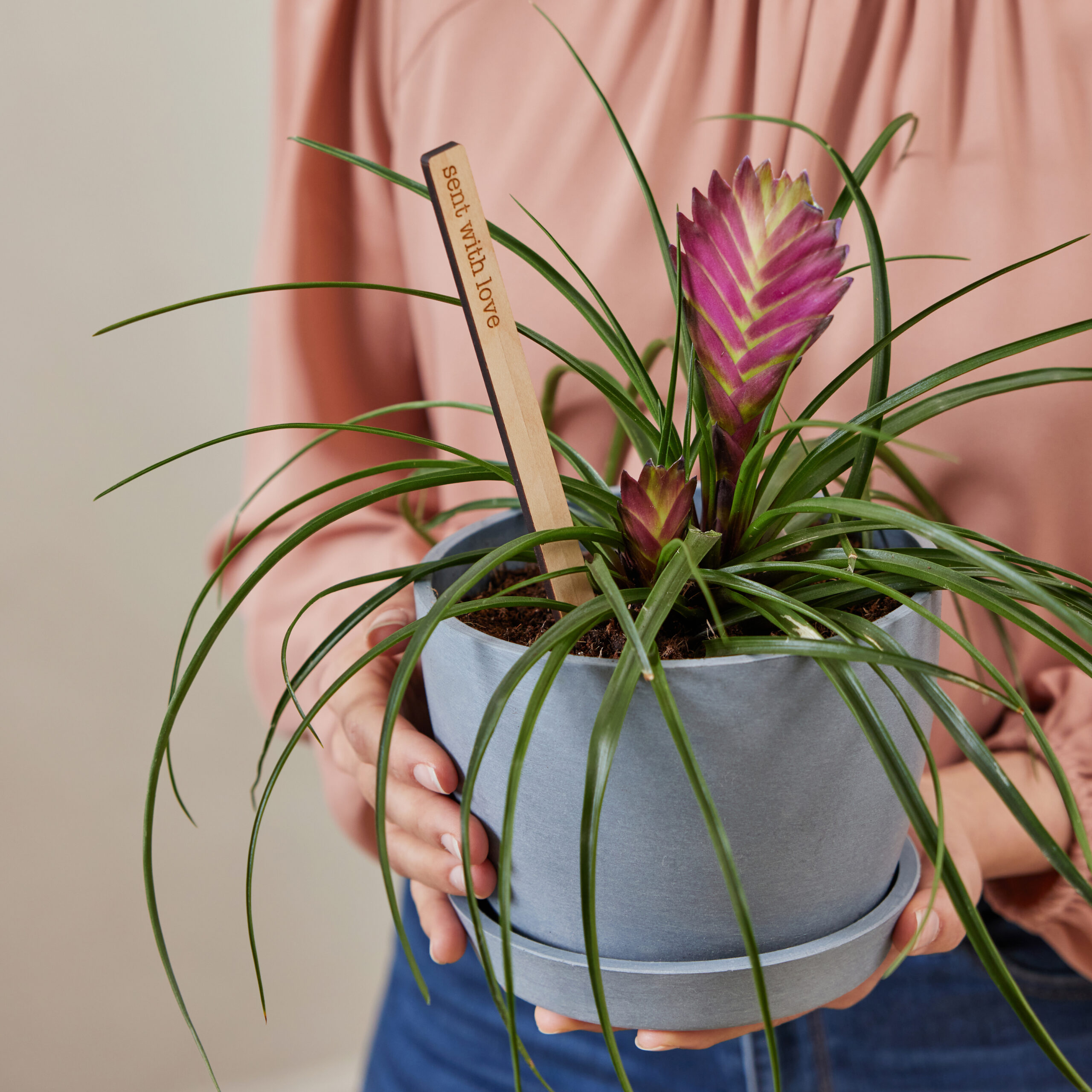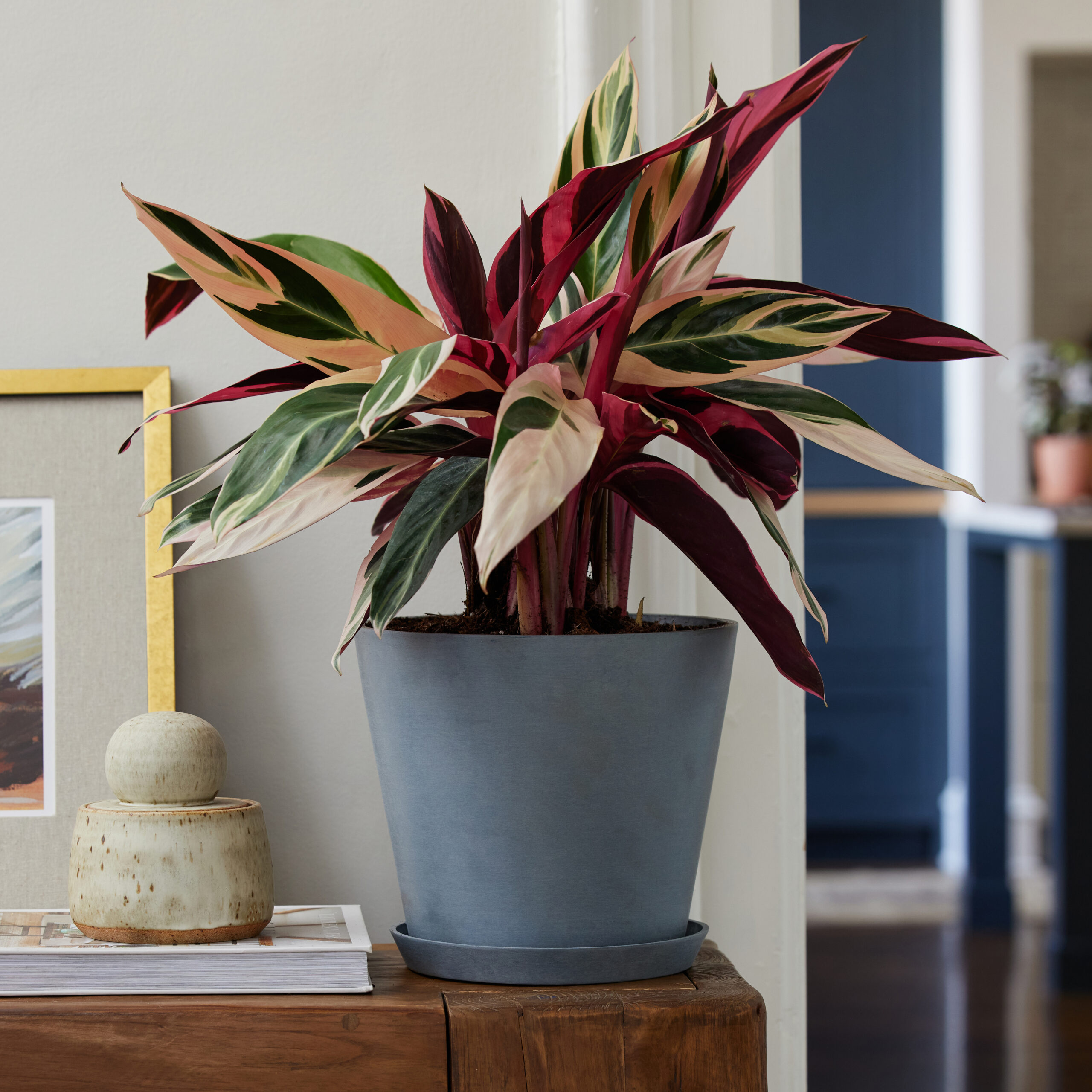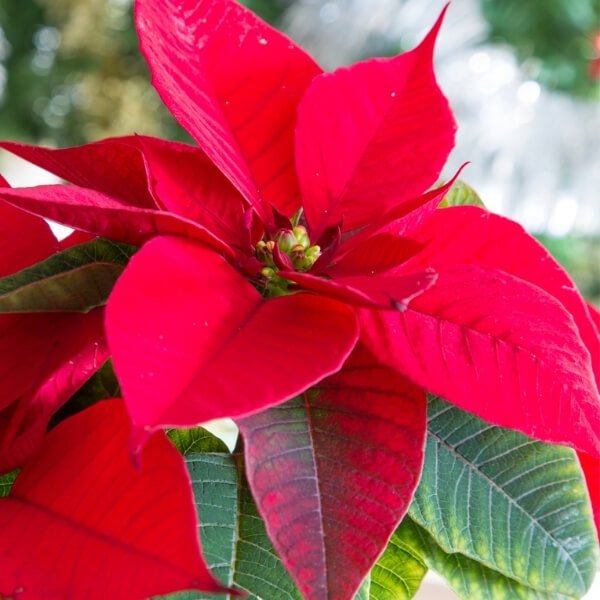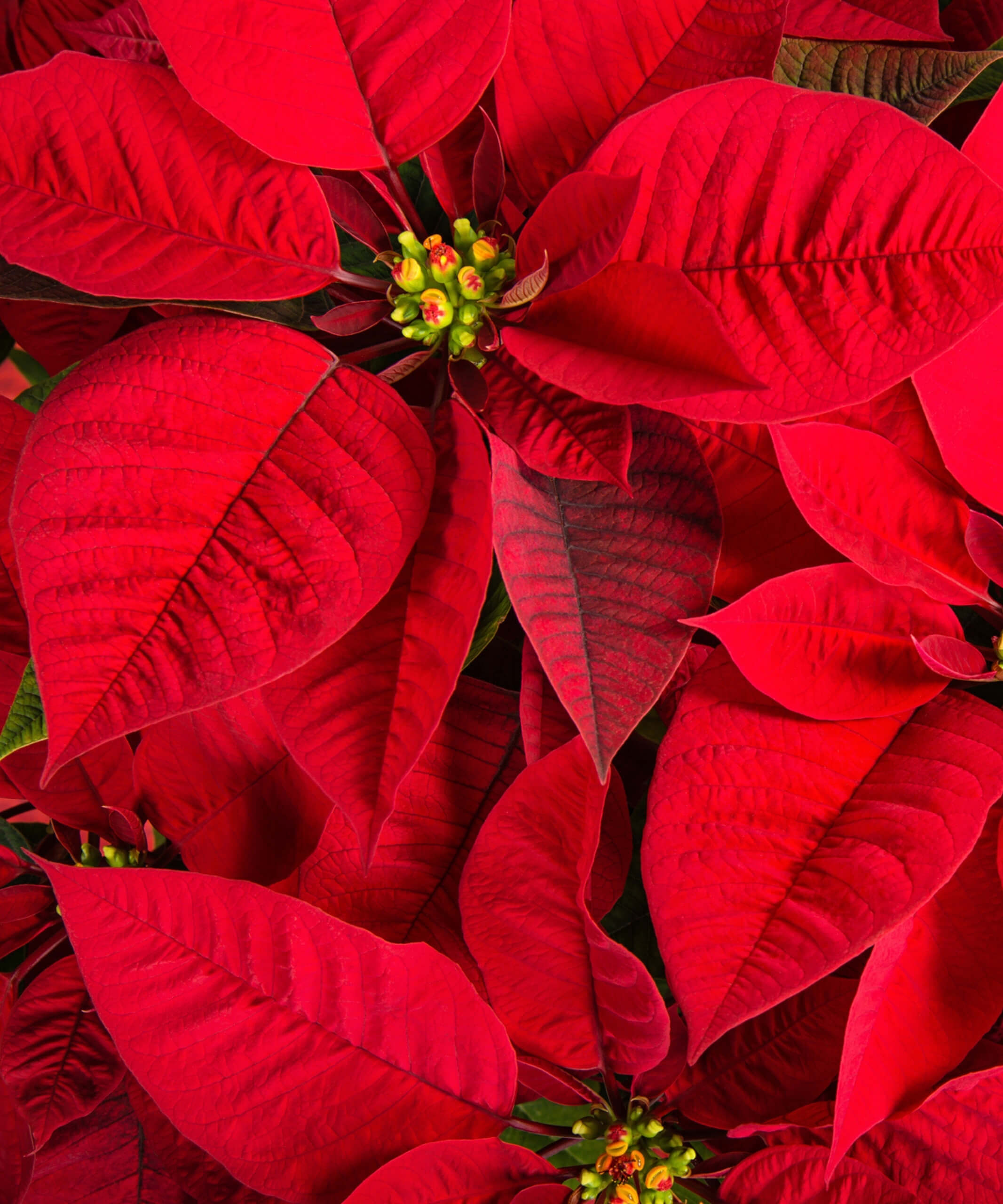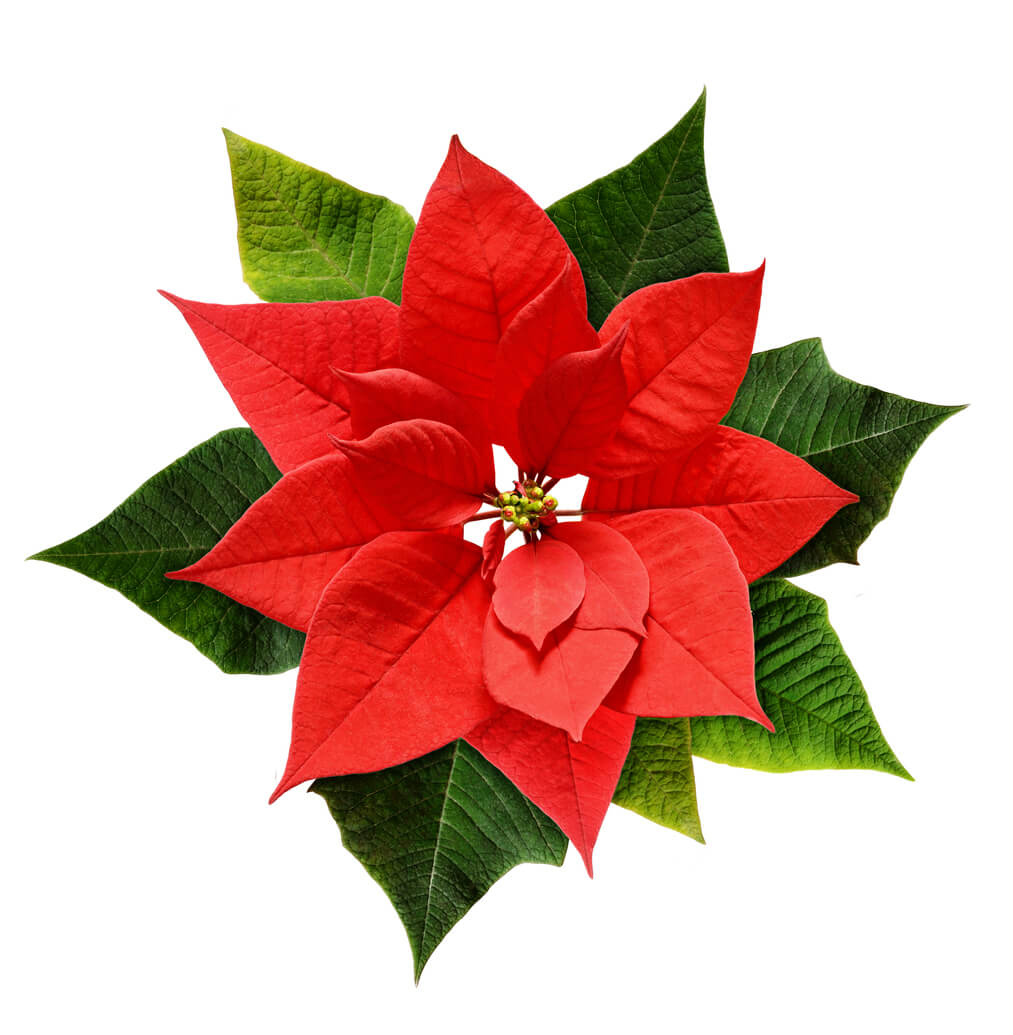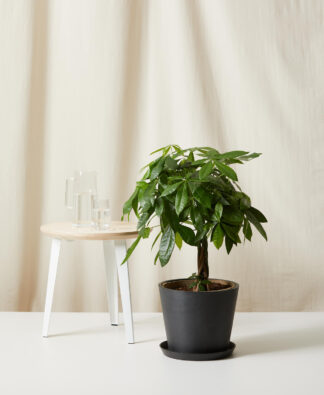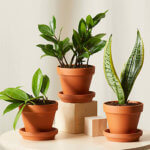How to care for your Poinsettia
Use these instructions to care for a Poinsettia. This guide will tell you how to water a Poinsettia; its light, temperature, humidity preferences and any additional care it might need to help it grow.
Poinsettia
Poinsettias love bright indirect sunlight. An east-facing window is ideal, or a few feet back from a south or west-facing window. Watch out for pale bleached leaves as this is a sign your plant is getting too much direct sun.
You should water your poinsettia when the top inch of soil is dry. Water slowly until you see water begin to trickle out of the pot’s drainage hole, and make sure you let excess water fully drain out. Your poinsettia feels more comfortable in moist soil instead of standing water.
Poinsettias enjoy humidity levels between 50% – 75%. You can boost humidity by lightly misting the leaves with lukewarm water. Another option is to place a dish of water or a humidifier nearby.
Poinsettia flowers appreciate daytime temperatures between 65-75° F and nighttime temperatures of 55-60° F. Keep your poinsettia away from drafty windows or doors, and any open vents.
You can give your poinsettia a boost with fertilizer for flowering plants diluted with water at half strength. However, you’ll need to keep from fertilizing your plant during its blooming period. Instead, you can feed it in the spring every three to four weeks when there’s no growth occurring.
Toxic only if ingested in very high amounts to pets and humans. The sap can be irritating to the mouth and stomach if ingested, sometimes causing vomiting. The sap may also cause a very mild allergic skin reaction in some people.
To encourage your plant to take on a full, bushy shape, prune the stems back in spring and allow the plant to flush out new growth. To encourage the plant to rebloom, ensure the plant receives complete darkness for 14 hours a day for a span of 8 weeks, beginning in mid to late September. This signals the plant to begin producing flower buds and colorful bracts in time for the holiday season.


